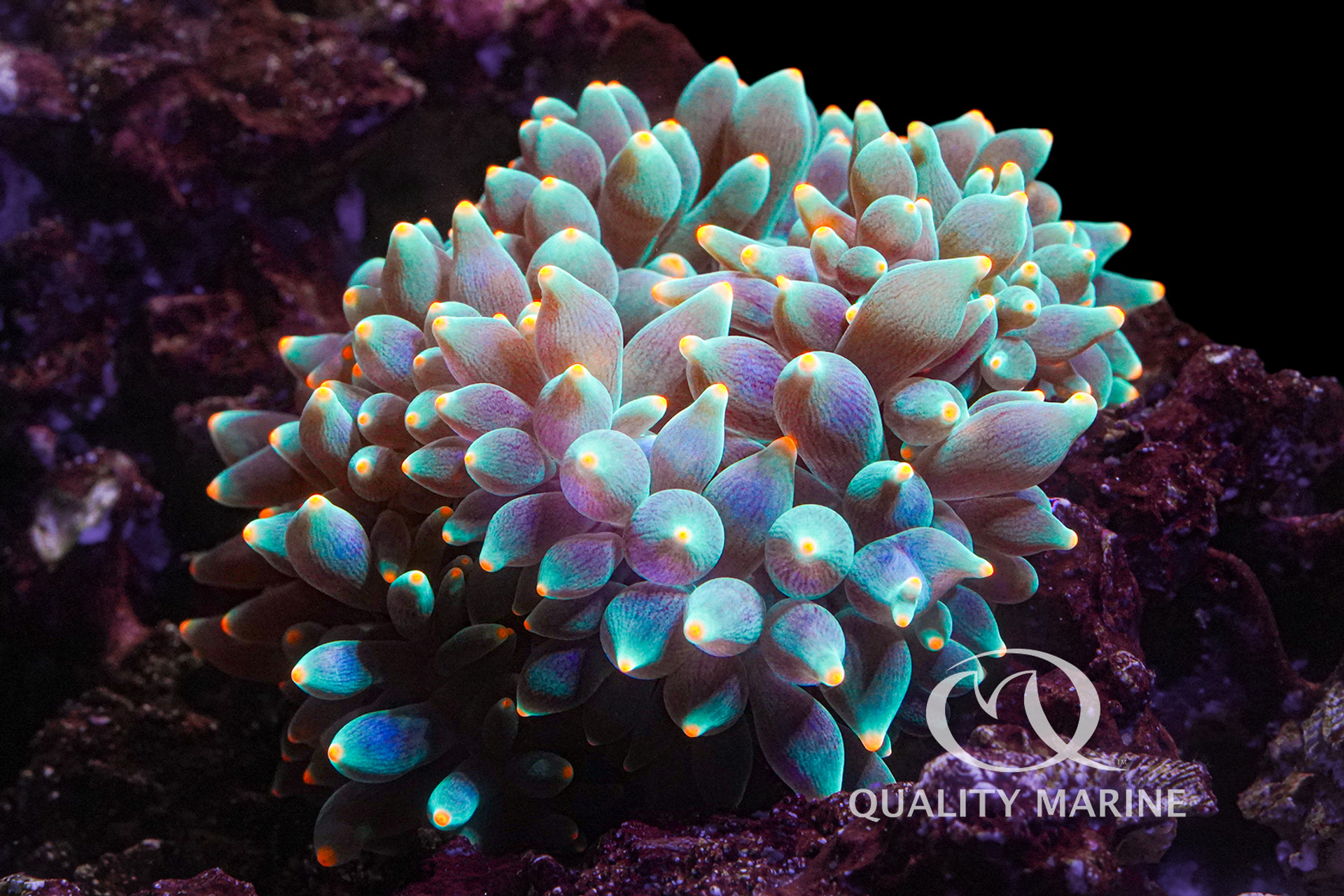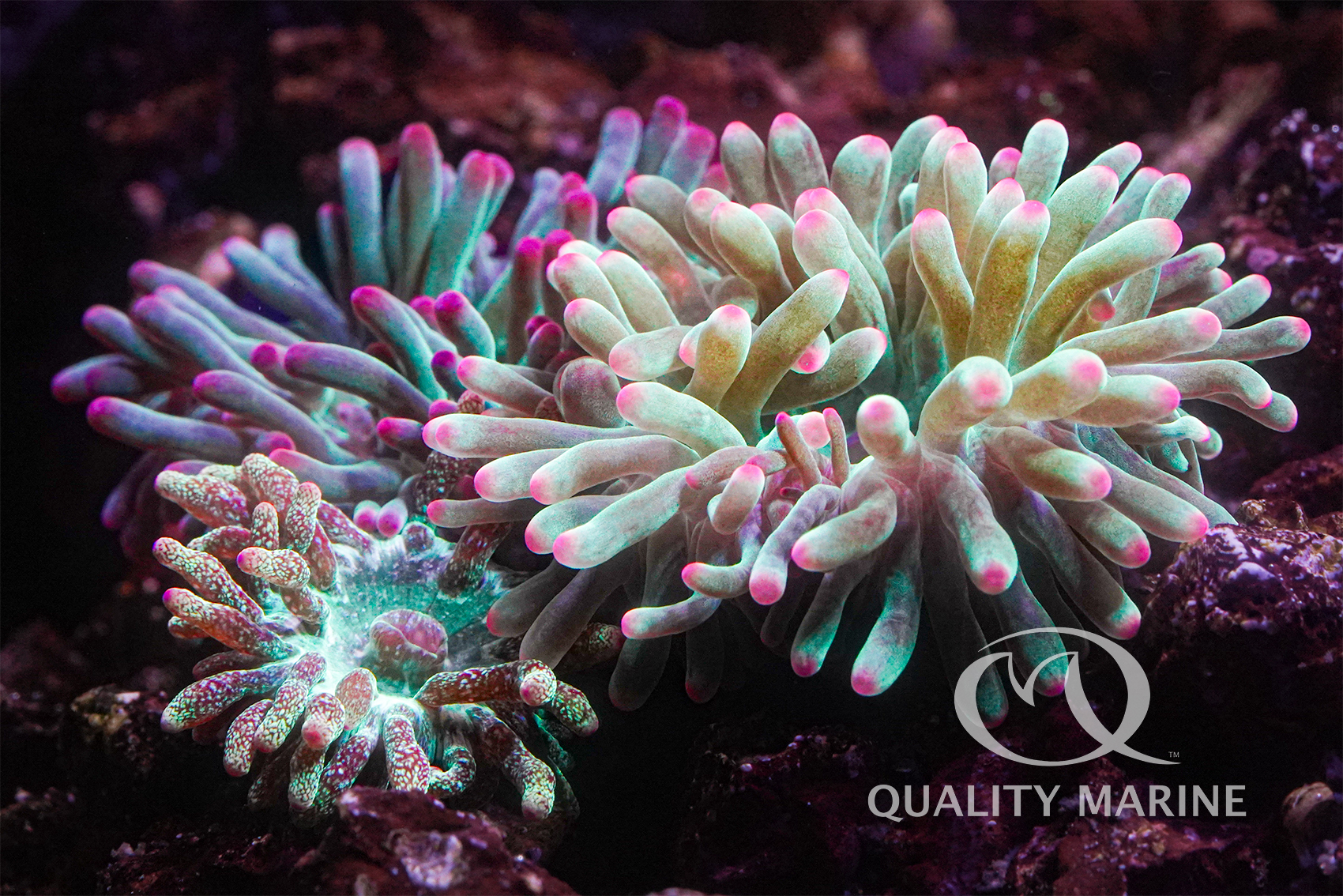Interesting Inverts: Bulb or Bubble Anemones (Entacmaea quadricolor)

The Bulb Anemone (also frequently called Bubble) is an ideal choice for the aquarist who would like to observe the fascinating symbiotic relationship between this animal and clownfish (or some damsels). Its ability to host many different species of anemonefishes offers the aquarist a huge variety of choices in establishing this interesting symbiotic partnership. There is no shortage of compatibility charts online, but in our experience, nearly any readily available anemonefish that wants a host is likely to take up refuge in a Bulb.

In The Wild
Bulb Anemones come in a huge variety of color morphs and sizes from brown and green and one inch across, to brilliant flame yellow, orange and iridescent pink and more that a foot across. They come from a variety of different tropical locations ranging from the west central Pacific to the Red Sea. From its initial classification in 1828, it has been recombined with synonymous species more than 60 times. In today's era of classification through genetic profiling, one wonders if a tighter classification isn't forthcoming. As a partially photosynthetic organism, they are usually found attached to rocks in relatively shallow water. There are some places where they are exposed at low tide!
In the Aquarium
There is a reason we call this species “ideal.” It is almost certainly the most hardy and adaptable of all the commonly available host anemones. They do extremely well in captivity having almost no needs that aren't within reach of most aquarists. The primary keys to victory are gentle random flow, and consistent temperature / water quality. Water quality demands are inline with all the other tropical reef animals you are likely to keep. Temperature should be around 78 and not fluctuate too much, specific gravity from 1.023 to 1.028, very low nutrient loads, etc. After these demands are met, you need to think about food and light. Bulbs can take quite a bit of light if acclimated to it gently (and they will likely migrate to these places on their own), and like all anemones, they can also eat surprisingly large meals. Choose meaty, marine based foods like silversides (start small) and offer them by hand, once or twice a week. The reason we talk about food and light in the same breath is because they are related. While all anemones need to be fed meaty meals, feeding them less is possible if they are getting long days of intense light. Lastly, many Bulbs will readily split themselves into new anemones in ideal conditions. One of my favorite displays ever was a tank that was completely populated by Flame Bubbletips that had started as one.
Biblio:
Digital Atlas of Marine Species & Locations, Myron Wang, University of Miami, 2016. http://damsl.org/catalog-number-results-page/?cat... Accessed 15 September 2020.
Quality Marine, Fleishauer, Eli. 10 June 2015, https://www.qualitymarine.com/News/Species-Spotli... Accessed 15 September 2020
WORMS, Froese, R. & D. Pauly, 2019, http://www.marinespecies.org/aphia.php?p=taxdetai... Accessed 15 Septemeber 2020
WetWebMedia, Fenner, Robert http://www.wetwebmedia.com/marine/inverts/cnidari... Accessed 15 September, 2020